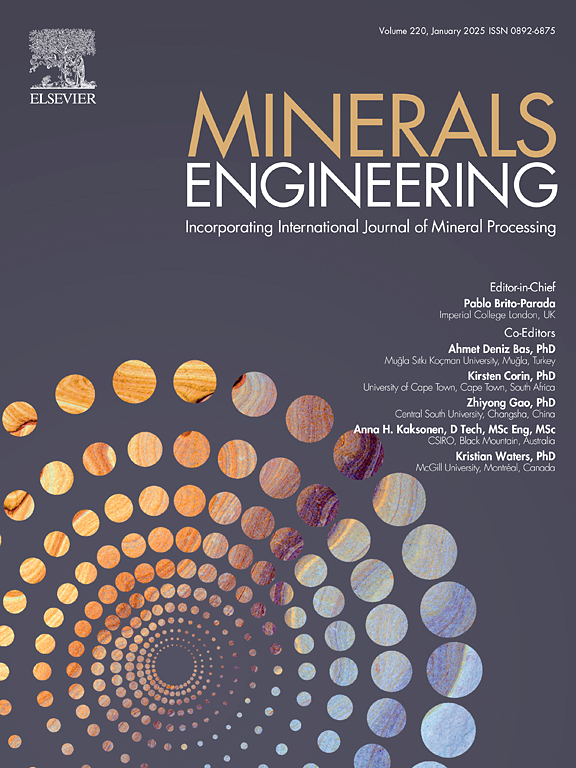冶金数字双胞胎的自主残余物监测
IF 4.9
2区 工程技术
Q1 ENGINEERING, CHEMICAL
引用次数: 0
摘要
数字孪生维护的重要性最近在工业应用中得到了体现。实际物理系统的变化会影响数字孪生与物理孪生之间的相似性,这可以从模型残差的持续变化中看出来。本研究提出了一种可自主更新的方法,用于监测多变量残差。该方法独立于所使用的模型,并根据马哈拉诺比斯距离平方监测归一化残差。该方法的主要新颖之处在于归一化,即使用最近残差的自主更新的平均值和标准偏差值进行归一化。通过使用磷酸盐选矿厂研磨回路的离线仿真模型和金矿浮选回路的在线自适应数字孪生模型,对该方法进行了研究。该方法的性能与传统的马哈拉诺比距离平方法和主成分分析法进行了比较。所提出的方法能检测出异常的残差,而且对初始训练数据特征(由平均值和标准偏差定义)的依赖性较低。使用不同的数据集进行训练后,Mahalanobis 平方距离的中位数监测值始终保持在与 50-57% 的卡方分布概率相对应的值上,而在没有自主更新的情况下,相应的值在 3-55% 和 39-88% 之间,这表明由于训练数据集的分布不同,其性能也不一致。所提出的方法具有可转移和自主配置的特性,可推进数字孪生的在线性能监测。本文章由计算机程序翻译,如有差异,请以英文原文为准。
Autonomous residual monitoring of metallurgical digital twins
The importance of digital twin maintenance has recently surfaced through findings from industrial applications. Changes in actual physical systems affect the resemblance between digital and physical twins, which can be seen in the continuously changing variation in model residuals. In this study, a method that autonomously updates itself is proposed for monitoring multivariate residuals. It is independent of the models used and monitors normalised residuals based on the squared Mahalanobis distance. The main novelty comes from the normalisation, which is done by using autonomously updated mean and standard deviation values of recent residuals. The method was studied by using an offline simulation model of a grinding circuit in a phosphate concentrator and an online adaptive digital twin model of a flotation circuit in a gold mine. Its performance was compared with conventional squared Mahalanobis distance and principal component analysis methods. The proposed method detected abnormal residual deviations and had low dependence on the characteristics of initial training data, defined by mean and standard deviation. After training with different data sets, the median monitored values of squared Mahalanobis distance remained consistently at values corresponding to 50–57% chi-square distribution probabilities, whereas without autonomous updating, the corresponding values were in the ranges of 3–55% and 39–88% showing inconsistent performance due to the varying distributions of training data sets. The proposed method with transferable and self-configuring properties can advance the online performance monitoring of digital twins.
求助全文
通过发布文献求助,成功后即可免费获取论文全文。
去求助
来源期刊

Minerals Engineering
工程技术-工程:化工
CiteScore
8.70
自引率
18.80%
发文量
519
审稿时长
81 days
期刊介绍:
The purpose of the journal is to provide for the rapid publication of topical papers featuring the latest developments in the allied fields of mineral processing and extractive metallurgy. Its wide ranging coverage of research and practical (operating) topics includes physical separation methods, such as comminution, flotation concentration and dewatering, chemical methods such as bio-, hydro-, and electro-metallurgy, analytical techniques, process control, simulation and instrumentation, and mineralogical aspects of processing. Environmental issues, particularly those pertaining to sustainable development, will also be strongly covered.
 求助内容:
求助内容: 应助结果提醒方式:
应助结果提醒方式:


